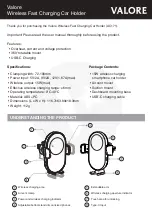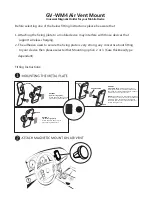
50
•
It is normal for the battery charger to become warm when charging.
Disconnect the battery charger from the outlet when not in use.
•
Never attempt to disassemble or repair a battery charger, power supply
cables, or plugs, because doing so exposes you to electric shock.
CAUTION
IMPORTANT SAFETY INSTRUCTIONS. SAVE THESE INSTRUCTIONS
DANGER
TO REDUCE THE RISK OF FIRE OR ELECTRIC SHOCK, CAREFULLY FOLLOW
THESE INSTRUCTIONS.
FOR CONNECTION TO A SUPPLY NOT IN THE UNITED STATES, USE AN
ATTACHMENT PLUG ADAPTER OF THE PROPER CONFIGURATION FOR THE
POWER OUTLET.
! RISK OF EXPLOSION IF BATTERY IS REPLACED BY AN INCORRECT TYPE.
DISPOSE OF USED BATTERIES ACCORDING TO THE FOLLOWING
INSTRUCTIONS:
BATTERY DISPOSAL
THIS PRODUCT CONTAINS A LITHIUM-ION BATTERY. THIS BATTERY MUST
BE DISPOSED OF PROPERLY. CONTACT LOCAL AGENCIES FOR
INFORMATION ON RECYCLING AND DISPOSAL OPTIONS IN YOUR AREA.
Regulatory and
Compliance Information
FCC Notice
This equipment has been tested and found to comply with the limits for a
Class B digital device, pursuant to Part 15 of the FCC Rules. These limits are
designed to provide reasonable protection against harmful interference in a
residential installation. This equipment generates, uses and can radiate radio
frequency energy and, if not installed and used in accordance with the
instructions, may cause harmful interference to radio communications.
However, there is no guarantee that interference will not occur in a
particular installation. If this equipment does cause harmful interference to
radio or television reception, which can be determined by turning the






































